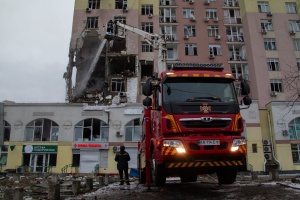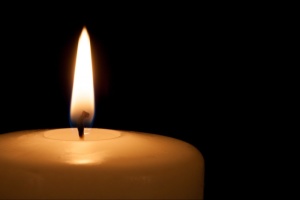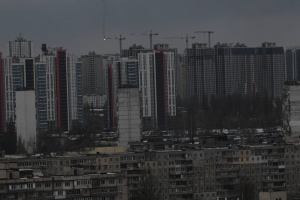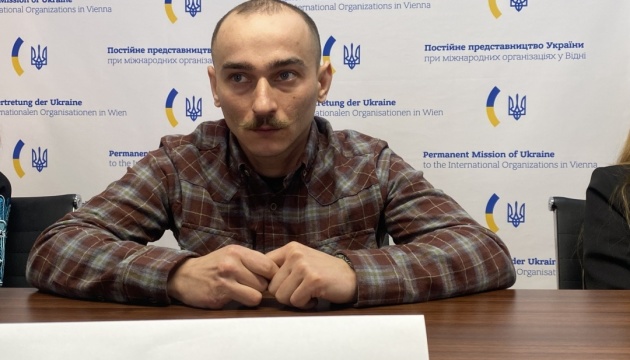
Mass murder of 'Azovs' in Olenivka: story of surviving prisoner
Ostap Shved, a 30-year-old Azov combat medic, survived the explosion in the colony in Olenivka in the occupied Donetsk region on the night of 29 July 2022 and subsequent torture in Russian captivity for a year. He was exchanged on 6 May 2023. In total, Ukraine managed to return 23 soldiers who were held in the blown-up barracks. Around 120 Azov soldiers who survived that night in Olenivka are still being held by the Russians.
At a recent event in Vienna, organised by the Media Initiative for Human Rights in cooperation with the Ukrainian, US and EU missions to the OSCE, Ostap Shved testified about the circumstances of the most massive killing of Ukrainian soldiers in Russian captivity.
This terrible war crime, which resulted in the deaths of about 50 captured soldiers (the exact number has not yet been established) and the injuries of others (including 74 who were seriously wounded), remains uninvestigated to this day. Then, the Russians transferred 193 Azov fighters to a remote barracks in the industrial zone of Volnovakha penal colony No. 120 and blew it up, accusing Ukraine of having launched HIMARS missiles at the prison.
The International Committee of the Red Cross, which, according to the Geneva Conventions, must have immediate access to all prisoners of war in all places of detention, has not visited Olenivka in the year and a half since the tragedy, nor has it had access to Ukrainian prisoners of war who survived the explosion in Russia. The same applies to the UN special mission that was formed to investigate the tragedy - it never received access to the colony in Olenivka and was disbanded five months later.
The following is Ostap Shved's first-person testimony at the OSCE headquarters.
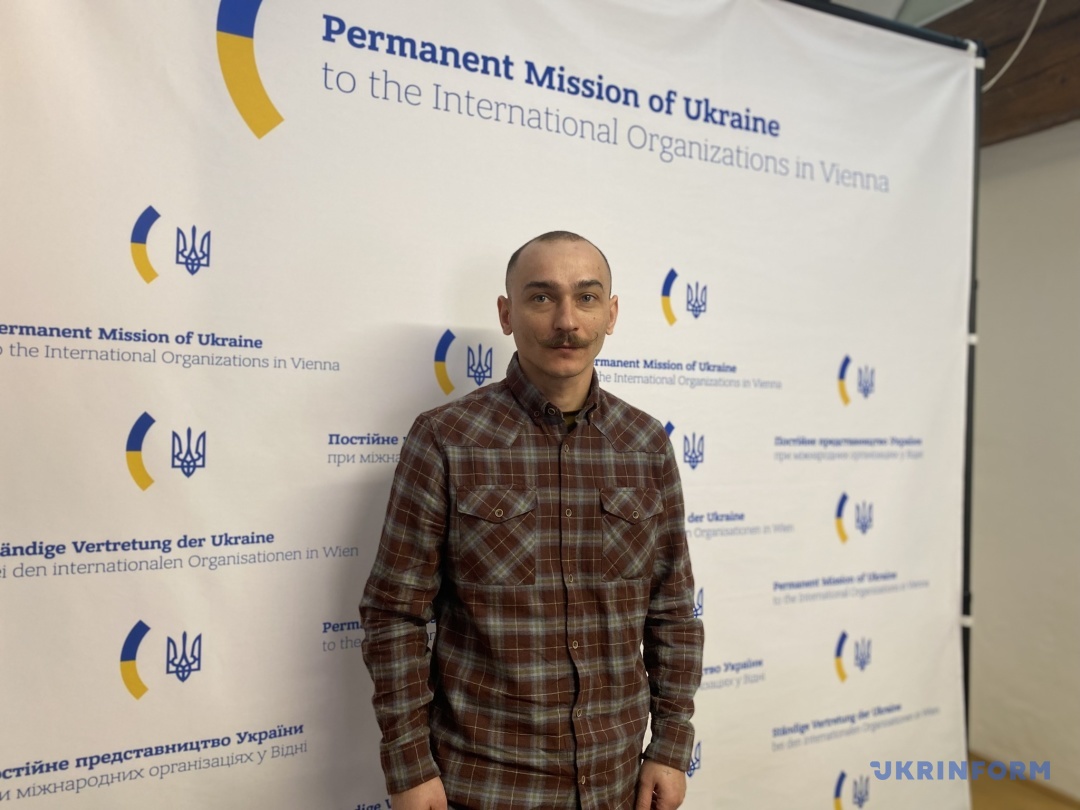
"OH, THIS ONE IS ALREADY DEAD". RUSSIANS DID NOT PROVIDE MEDICAL ASSISTANCE AFTER THE EXPLOSION
- My name is Ostap, I am a qualified doctor, I studied to become a paramedic. Since the end of 2014, I have been serving in the Azov regiment. During all my years of service, I was a medic in the unit and provided assistance to the wounded on the battlefield. I took part in the defence of Mariupol and was wounded twice there.
On 18 May, my comrades and I left Azovstal in compliance with an order and surrendered. On the 19th, we were taken to Olenivka, where we were put in barracks.
On 27 July, 193 people were taken out of the barracks and placed in a workshop in the industrial area. The workshop itself, which had about 200 beds, was not suitable for people to live in. We had no water, there was only one barrel, where a fire truck brought water from the nearest reservoir.
We stayed there until 28 July.
On 28 July, at around 11:00-11:20 pm, the Russians set up a Grad multiple rocket launcher system in very close proximity to this barracks. And what is important is that they had never before deployed either artillery systems or MLRS in such close proximity to the colony.
After the "Grad" had worked, there was one explosion near our barracks. Then 30-40 seconds passed, and two explosions occurred in the barracks.
The barracks started to burn. We started to get out, but the exit was blocked by human bodies and the beds we were sleeping on.
The fire spread very badly throughout the barracks. We started pulling out our wounded, but we could not reach the people who were at the very end.
After we left the barracks, we broke the fence around it and started to move closer to the main territory of the prison. Many of the soldiers were seriously wounded with penetrating wounds to the head, chest and abdomen, with amputations of arms and legs.
As we approached the prison, I approached and asked for the opportunity to pull the seriously wounded to the light at the entrance - there were lights there, and we wanted to pull the seriously wounded there to see how to provide medical care.
The Russians who were on the other side of the fence started shooting upwards and threw stun grenades.
I asked them to provide at least some materials so that I could stop the bleeding and provide first aid. One of the Russians threw me two bandages and a tourniquet. We had 74 seriously wounded people...
After that, we started to tear our clothes, whoever was wearing what, and use these pieces to stop the bleeding and somehow help the seriously wounded.
We stayed there from about half past 12 at night until 4 am. During this time, we provided first aid to ourselves. The Russians gave us only a few sheets, which we also tore up and used to wrap our wounded.
Many people died because they simply did not receive timely and high-quality medical care. They just bled to death...
Around 4.00-4.30 am, our prisoner-of-war medics were allowed to visit us, but they did not have enough materials to provide quality care to everyone. We started sorting people into categories - severely, moderately and lightly wounded - and providing assistance only to the most seriously injured.
The Russians did not allow their medics to come to us and did not provide us with any more medical materials.
At around 8am, two military KamAZ trucks arrived. By then, several people had already died.
The most seriously wounded were as close to the fence as possible. At that time the deputy head of the colony was standing near it, drinking coffee and smoking. When I went to look at my comrade, he was already dead - he had wounds to his head, both legs and chest. And he [the deputy head of the colony] said: "Oh, and this one is already dead." (During the conversation, Ostap periodically finds it very difficult to speak, he starts trembling, and tears almost roll down his eyes. In particular, at this moment).
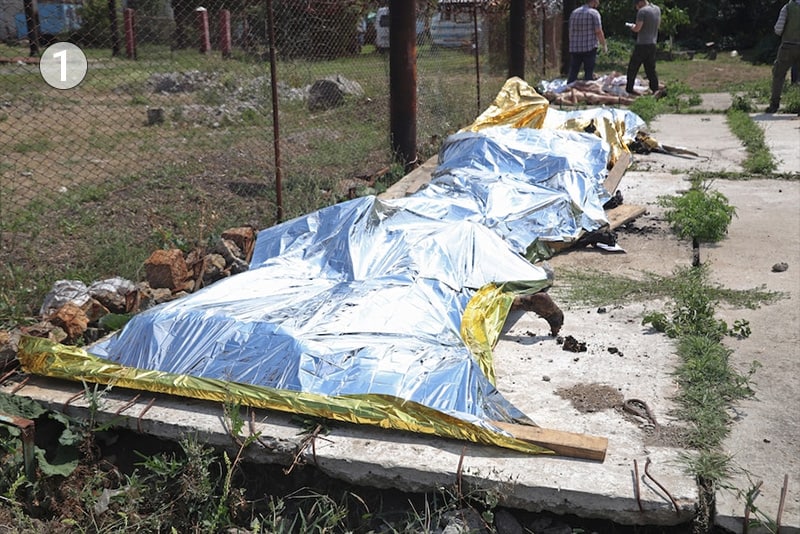
THE SEVERELY WOUNDED WERE LOADED INTO KAMAZ TRUCKS - ON TOP OF EACH OTHER
- After the KAMAZ trucks arrived, we started loading our seriously wounded into them, being wounded ourselves. Some of them had very severe burns, third-degree burns of the entire body. Some had leg amputations and bleeding, which we stopped with torn clothes.
All of them did not fit, but the Russians told us to load them on top of each other, because there would be no more cars. So we loaded 74 seriously wounded people into two KamAZ trucks. We loaded people like pork carcasses. Several more people died on the way to the Donetsk hospital, they simply suffocated.
"The KAMAZ trucks went to the hospital, and we stayed on the road - 76 medium and lightly wounded. The bodies of our severely wounded comrades, who bled to death, stayed with us. And a few more bodies we pulled out of the burning barracks.
Around 8 a.m., all of us with light and medium injuries were brought to the prison and taken to a disciplinary isolation unit. I personally had 9 shrapnel wounds - eight in the leg and one, almost permanent, in the hand [before that, during the defence of Mariupol, Ostap's little finger on his left hand was torn off]
We were locked in two cells and did not receive any help for four days. Our cell was very small, designed for six people, and there were 35 of us in it.
On the fourth day, two of our female prisoners of war were allowed into our cells. But since they had a limited amount of medical supplies, they were unable to provide us with full assistance, and many people had shrapnel inside them and various injuries.
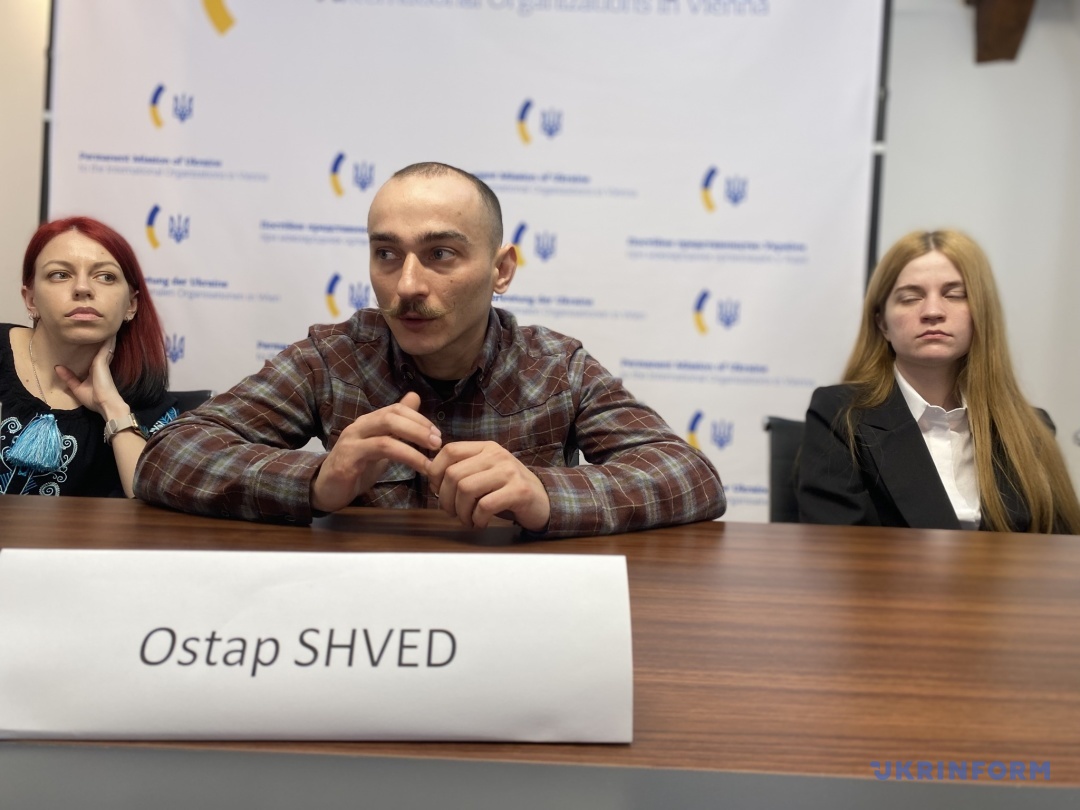
IN TAGANROG DETENTION CENTRE WE WERE BEATEN TWICE A DAY AND TORTURED
- We stayed in this disciplinary isolator for about a month, after which we were sent to Taganrog to a detention centre.
Some of the wounds healed, but some festered, because even in Taganrog, the Russians did not provide us with any medical care.
There were also guys from the barracks in Olenivka who were taken to a hospital in Donetsk. They had amputated lower limbs and numerous shrapnel wounds.
I stayed in Taganrog for 7 months, until 6 May, after which I was exchanged. Even before my release, I was tortured.
In general, the conditions of detention were very difficult. There were seven of us in the cell. Twice a day, the special forces came to check us, they would take us out, beat us and put us back in. They beat us just for fun.
We were also dragged for interrogations, where they used torture with various devices and extracted confessions to the 'murder' of civilians in Mariupol.
During the seven months I was in Taganrog, I know for sure that one 'Azov' and one marine were beaten to death.
One died of a closed pneumothorax. His ribs were broken. We had nothing to help him, but Russian medics did not arrive in time, so he died. The other one, 'Chyzhyk', was also a medic, he had a severe injury to his arm and chest. He was beaten during interrogation, and internal bleeding started. I suspect that because he was hit, the shrapnel travelled further into his body and damaged his arteries. He also died of bleeding.
Representatives of the Red Cross were not allowed to visit us in the Taganrog detention centre.
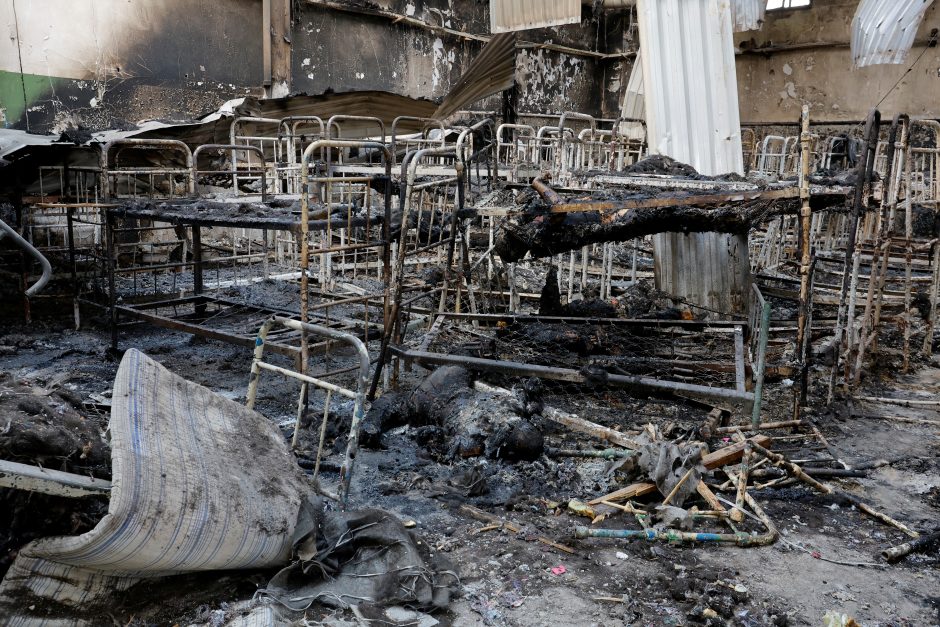
WHAT KIND OF WEAPONS DID THE RUSSIANS USE?
- I think it was a pre-planned mine inside the hangar itself. The Russians are saying that it was allegedly our people who shot at us. But I've been in the military for a long time and have seen artillery shells explode many times, and the two explosions that happened in the barracks did not resemble the result of an artillery burst.
When I ran in with my comrades to pull out our seriously wounded, I didn't see any rocket or shell fragments or shrapnel damage to the walls and roof anywhere.
And what was surprising was that there was a very large fire. This kind of fire is not caused by artillery shells. It looked more like a charge of some kind of napalm, because the corrosive substance was scattered over two-thirds of the barracks.
All the shrapnel wounds I personally received were caused by secondary products, i.e. glass, metal tiles, pieces of walls, etc. Since I have been helping the wounded on the battlefield and evacuating them from there since 2014, I have a lot of practice and can distinguish between injuries caused by artillery shells and injuries caused by secondary products from the explosion.
And another thing that is very important is that no two missiles or shells can hit the same place with an interval of two seconds.
It is also important that on 28 July, in the afternoon, representatives of the colony came and kicked us all out of the barracks. They stayed there for an hour and a half to two hours, while we stood there, driven to the end of the yard.
It should also be noted that on 27 July, when we were settled there, the prisoners of war were digging a trench for the guards near this barrack. Although there were no trenches on the whole territory of the prison before and they did not dig such fortifications.
It is also noteworthy that on 27 July, the Russians also put up searchlights that illuminated our barrack. But on 28 July, they took them away, and only a few regular lights shone.
As for the "Grad" system, it was the first time it was so close to us during our stay in the colony. I think it was done on purpose, so that they could say that our "response" had arrived.
HOW COULD THEY HIDE NAPALM IN THE BARRACKS?
- It was very easy to do, because we were placed in the lathe shop, and there was a transformer box in it, and a crane beam above the box. The detonation occurred in this very place.
I suspect that the first detonation occurred in the transformer box itself, and the second on the crane beam, after which everything started to burn. After the second detonation occurred - and there was an interval of about two seconds - this flammable liquid spread very quickly throughout most of the room.
And what is very important - and my comrades and I saw this - after the detonation, the roof collapsed not downwards, but outwards. There were no holes in it from shrapnel, as is usually the case after an artillery shell hits.
The walls inside the workshop were also not damaged by shell fragments. This can also be seen in their videos [videos of Russian propagandists from the scene of the attack in Olenivka]. As a person who has seen explosions indoors many times, when bombs hit our bunkers at Azovstal, I noticed it right away.
I went into the barracks when it was completely burnt out, and I didn't see any debris - no shrapnel, no rockets, nothing. I only saw the bodies of my burnt-out comrades, the beds pushed as far as possible and the roof that had collapsed.
HOW THE TRANSFER TO THE BARRACKS WAS EXPLAINED AND WHY THE 'AZOVS' WERE KILLED
- There were three barracks in Olenivka with the 'Azovs'. At 9 am, representatives of the colony came, lined us up, read out our names and said we had a few minutes to get ready. They started taking us from each barrack outside the prison to this industrial area, to this barrack specially prepared for us.
During the day, people went there. Sometime in the evening, either the head of the colony or his deputy came, we were lined up, and he told us that it was to unload the overcrowded barracks. And then he said that it was in order to go to the stage or for the exchange. He did not say specifically. He said that we were brought here to be sent somewhere else or to unload other barracks.
Although there were premises on the territory of the prison itself where we could have been settled, for example, where our doctors from Mariupol were based. There was, if I'm not mistaken, a two-storey building, the same as our barracks, and medics from the 555th hospital were based there. There were 20 of them there, and this room could easily accommodate 200 people, because they had put 333 of us in an even smaller room before.
Why us? Why did they blow up Azov? I think we are like a bone in their throat. We are ideological, and we are fighting for our country to the end, we are self-learning, we are self-developing.
We will fight for our country to the end. The enemy is well aware of this and wants to break us as much as possible - mentally and physically.
Vasyl Korotkyi, Vienna
Photo by the author


